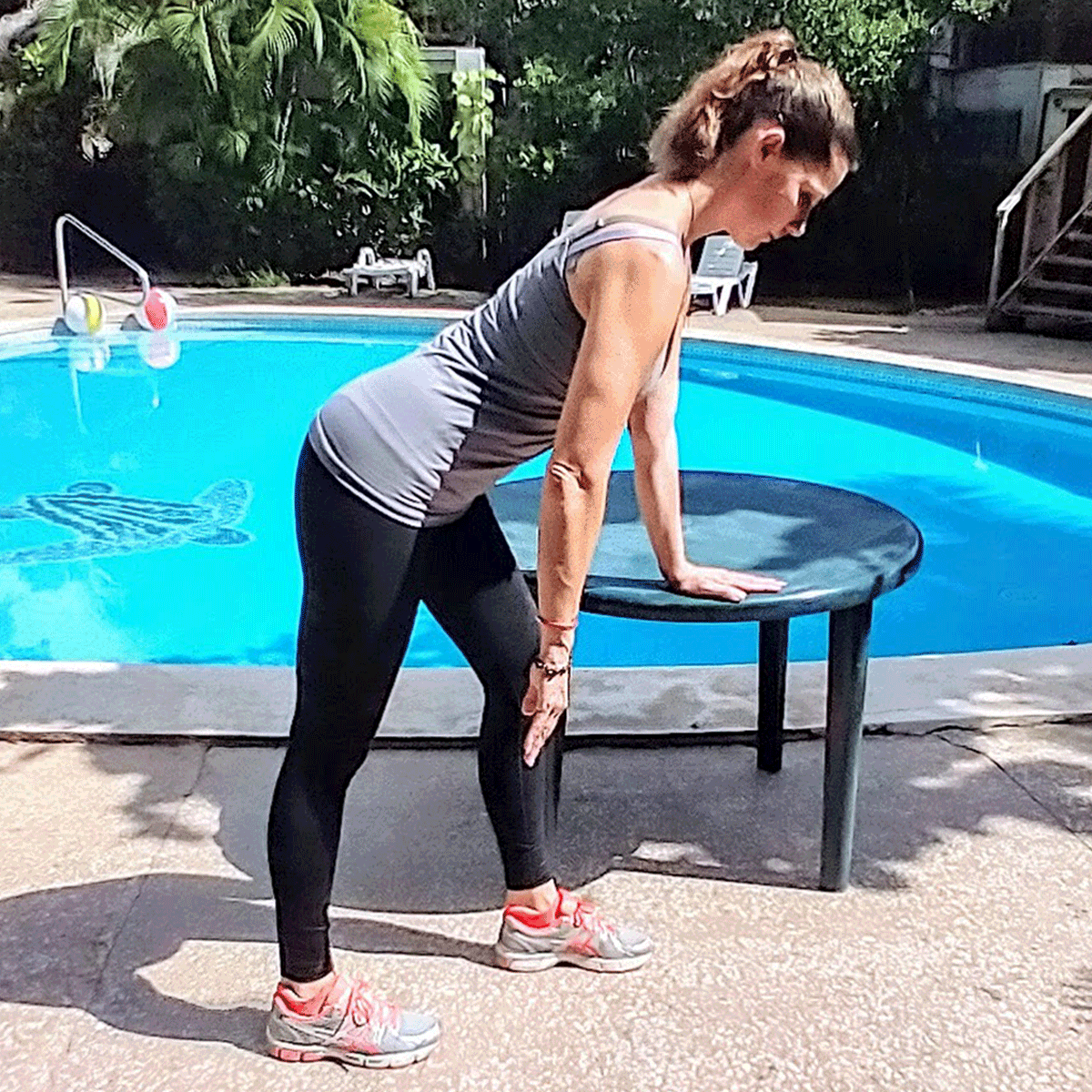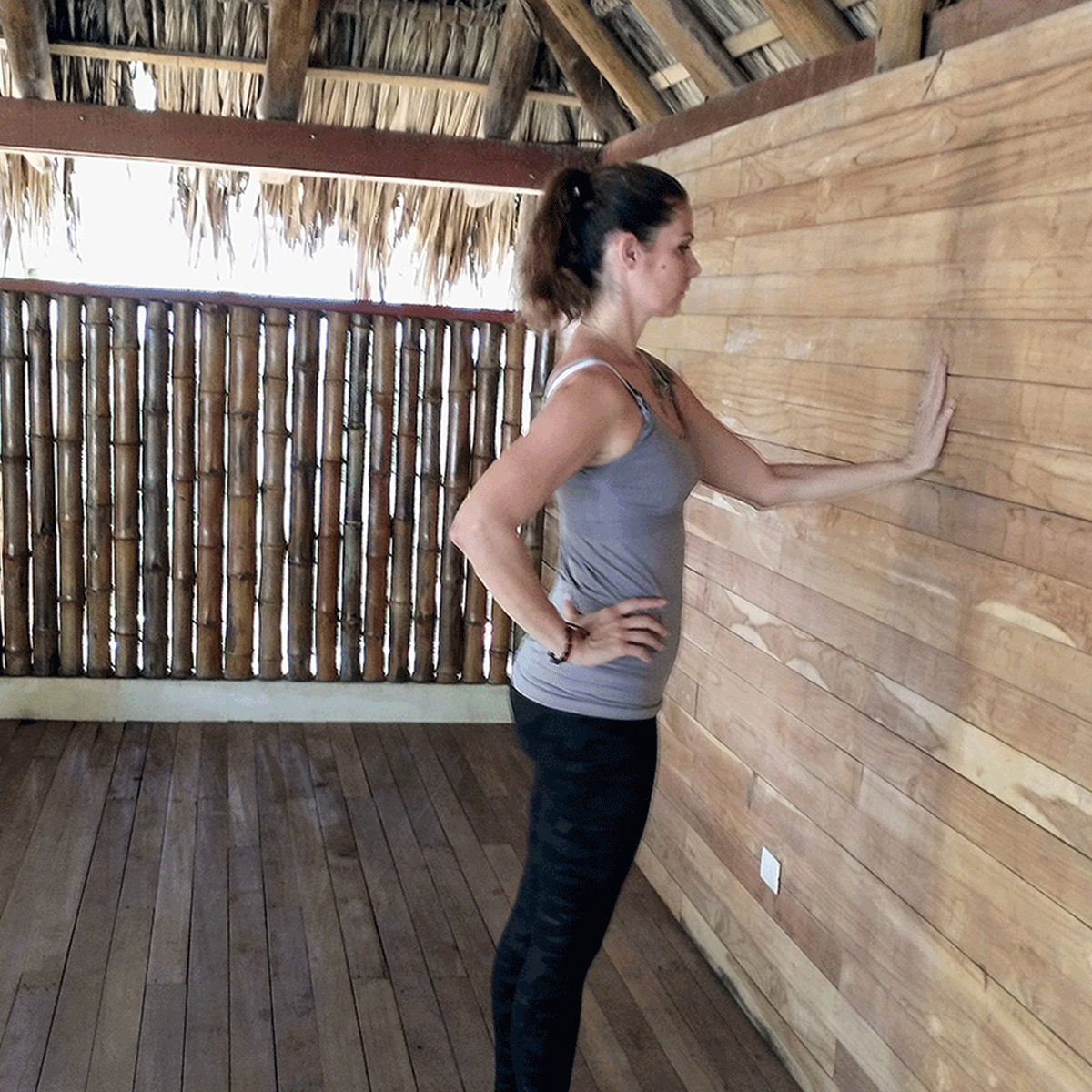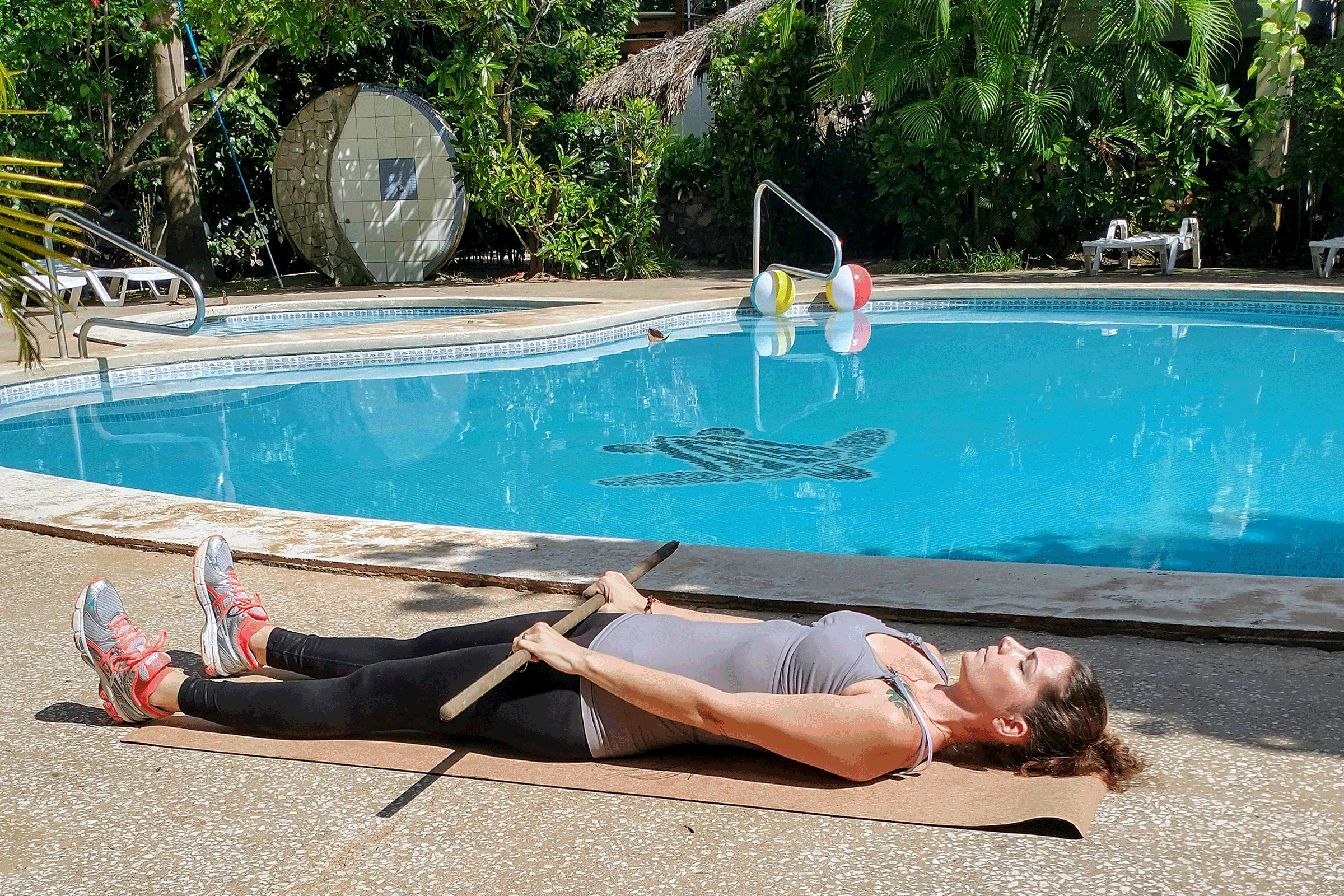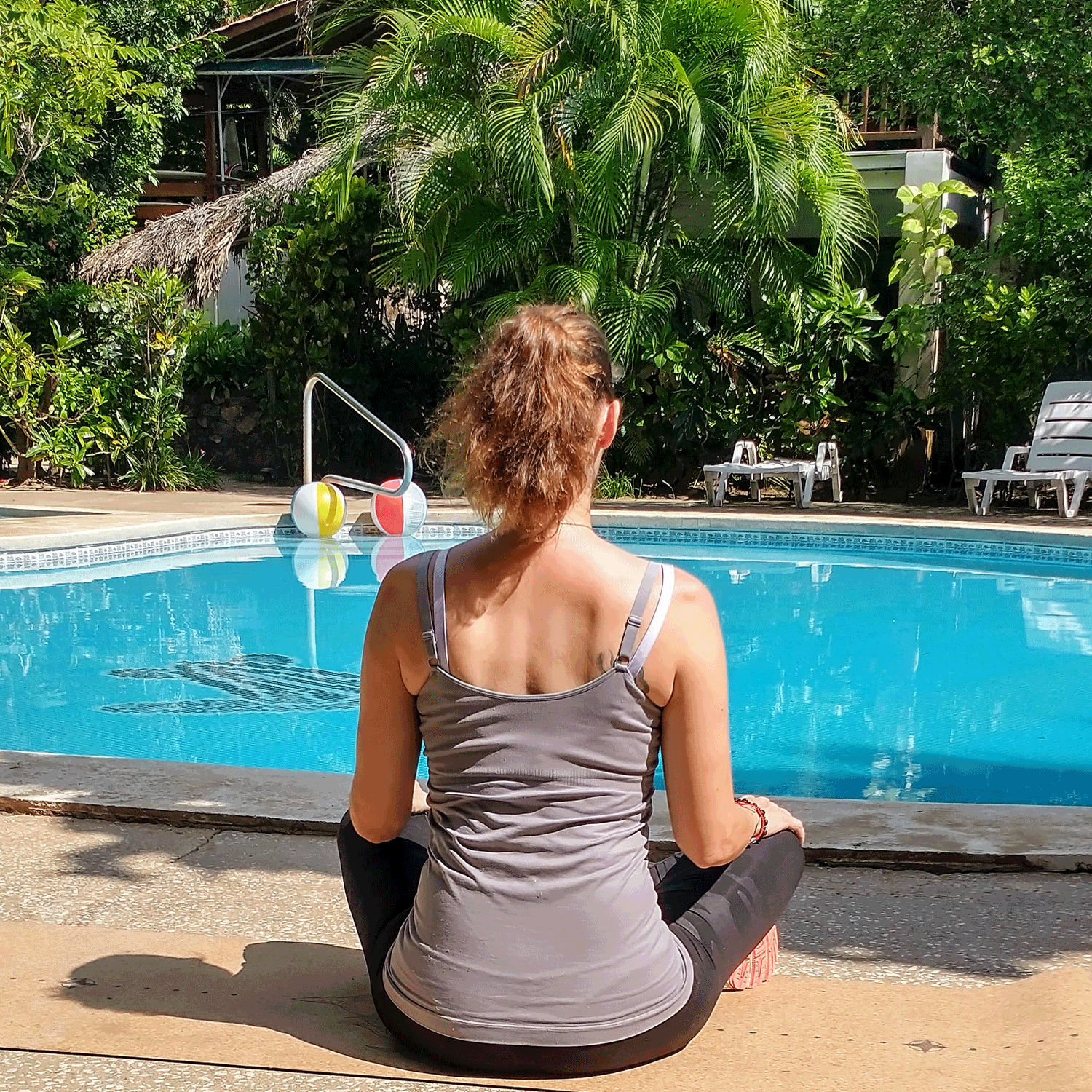4 Frozen Shoulder Exercises to Help Boost Your Mobility
Updated: Nov. 04, 2021
Frozen shoulder can be painful, but with regular exercises you can see improvements faster.
Are frozen shoulder exercises helpful?
A frozen shoulder diagnosis is a bit of a mystery, even to experts. While physical therapists and doctors understand the problem—the underlying issue that’s causing pain and immobility—there’s rarely a clear or obvious cause, which makes prevention tricky, if not outright impossible.
“Frozen shoulder is a condition called ‘adhesive capsulitis’ in the shoulder,” says Theresa Marko, PT, DPT, MS, a physical therapist who is board-certified in orthopedic physical therapy.
“It’s when the joint capsule of the shoulder tightens up, and one is severely limited in moving their arm.”
It might sound counterintuitive, but experts say certain frozen shoulder exercises can help. Here’s what experts want you to know, and the moves they recommend.
What causes frozen shoulder
Frozen shoulder doesn’t typically occur due to an injury, and it’s not linked to a more dominant arm or a particular occupation or repetitive movement. So, unlike other shoulder injuries that might occur due to excessive overhead throwing actions, a frozen shoulder can arise seemingly out of nowhere.
That said, there are populations and circumstances where frozen shoulders occur more frequently.
“It’s a fairly common ailment,” Marko says. “It’s more common in women around 50 years old, and there’s a correlation to having a major stress event in one’s life that can bring it on.”
And that’s part of what sets frozen shoulders apart from other types of pain or immobility that occur at the joints. While it’s possible someone might precipitate a frozen shoulder due to immobilization from a previous surgery or injury, or due to impingement or weakness issues, the “underlying issue” is often major life stress.
(Learn about 12 other possible reasons for shoulder pain.)
Symptoms of frozen shoulder
The nickname “frozen shoulder” is pretty descriptive of the symptoms. Essentially, your shoulder “freezes up,” losing range of motion and making it hard (if not impossible) to lift, reach, or rotate your arm from your shoulder joint.
The American Academy of Orthopaedic Surgeons describes three phases of adhesive capsulitis at the shoulder: freezing, frozen, and thawing.
Essentially, the “freezing” phase is a period of progressively greater pain and increasingly difficult movement. This phase can last from six weeks to nine months, and is likely when movement is most painful.
The “frozen” phase may carry with it a little less pain (although that’s certainly not guaranteed), but the immobility remains, making daily activities hard to complete. A frozen shoulder can remain in this phase for four to six months.
And finally, the “thawing” phase is the time period in which the joint gradually returns to normal, which can take anywhere from six months to a year.
And therein lies another mystery of a frozen shoulder. Marko points out that frozen shoulder will get better on its own over time, but if you’re not proactive about treatment, it can take a year (or sometimes longer) to improve.
(When your pain is in your shoulder blades, this is what it might mean.)
Treating a frozen shoulder
Chances are, if you’re suffering from pain and immobility, you’re going to want to see a doctor or physical therapist to get a specific diagnosis and treatment plan.
In fact, Marko says, the fierce pain of a frozen shoulder might mean you don’t want to move your arm at all. That said, when done correctly, movement can help you return to normal much faster.
“You really need to see a physical therapist for this, because a physical therapist will move your arm for you, utilizing passive movement (where you’re not moving your arm yourself) to improve range of motion more easily,” she says.
Frozen shoulder exercises
Still, there are ways to keep working on your range of motion yourself at home. Marko suggests the following frozen shoulder exercises as a way to stretch the affected joint.
(Improve your posture with these shoulder exercises.)
Pendulum circles

Stand next to a table with your body positioned perpendicular to it, your healthy shoulder closest to the table. Place the hand of your healthy arm on the table for support.
Keeping your core engaged and your back straight, tip forward from the hips, so your torso is at a 45- to 60-degree angle. You may want to stagger your feet to more comfortably get into this position.
Allow the arm with the frozen shoulder to hang straight down, your hand pointing to the floor. Keeping your arm straight, start swinging the arm of your frozen shoulder in a small, clockwise circle, tracing an “O” with a roughly 1-foot diameter in the air.
Complete 10 circles, then reverse the movement, performing the same motion in a counterclockwise direction. Complete 10 more circles. Perform a total of three to five sets.
(Try a sleeper stretch for better shoulder range of motion.)
Wall climbs

Stand facing a wall, starting roughly 1 to 2 feet away from the wall (this will change based on your shoulder’s mobility). Place the hand of your frozen-shoulder arm on the wall at chest height, your elbow bent.
Slide your hand up the wall, straightening your elbow as you reach higher. Stop when you feel a stretch (you don’t want to push to a point of exacerbating your pain) and hold the position for 15 to 20 seconds. Repeat the exercise three to five times.
If you can’t move your arm very high up the wall, stand farther away from the wall. If you can extend your elbow and reach your arm easily to a fully extended position, move closer to the wall to start the exercise.
(Build shoulder strength with these at-home exercises.)
Supine overhead reach with a dowel

Lie on your back, your legs extended, your body forming a straight line. Hold a dowel, umbrella, or broomstick in both hands with your arms fully extended at your sides, your palms facing down.
The stick should rest across your upper thighs, and your arms should be positioned against your body. Keeping your elbows fully extended, begin lifting the dowel straight up, moving in an arc, so it reaches toward the ceiling, then backward over your head.
Stop when you feel a good stretch (but you’re not exacerbating your pain) and hold for five breaths before returning the dowel to its starting position. Repeat 10 times.
(Try stretching your delts if you have shoulder tightness.)
Shoulder blade squeezes

Shoulder blade squeezes, or scapular retractions, are just what they sound like—you’re trying to squeeze your shoulder blades together. Sit or stand and engage your core while maintaining good posture. “Stack” your ears above your shoulders and hips.
Take a deep breath in and squeeze your shoulder blades back and together. Hold for a count, then relax as you exhale. Complete three sets of 10 repetitions.
(Improve rotator cuff range of motion with these exercises.)






















